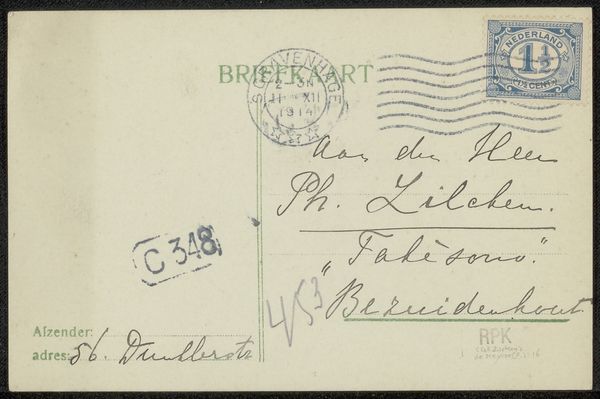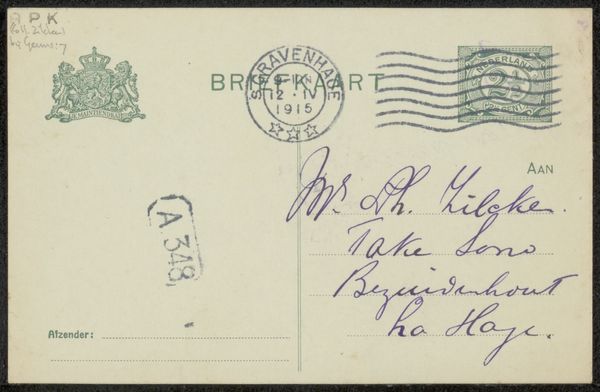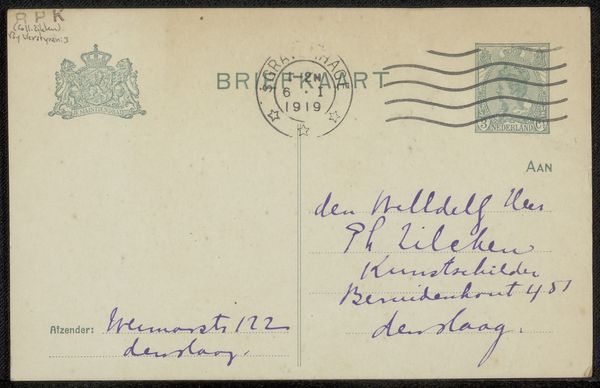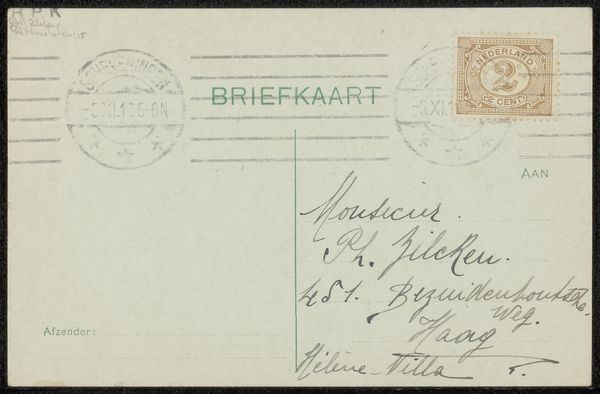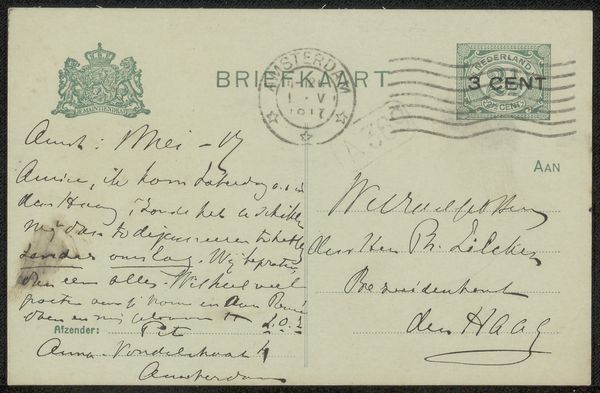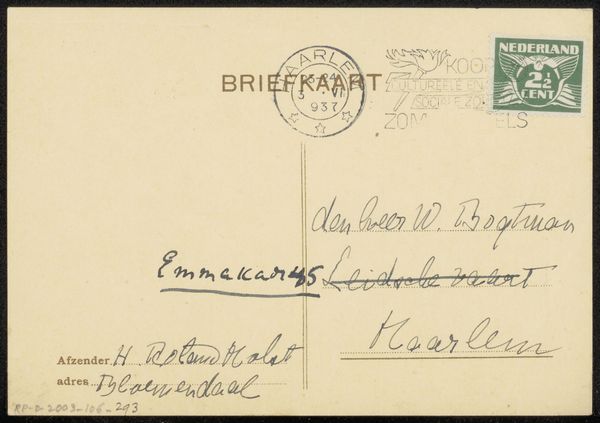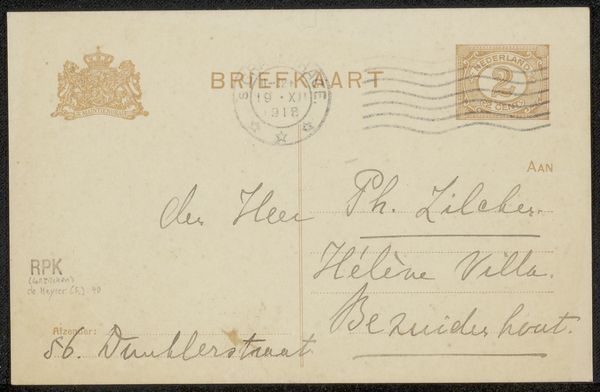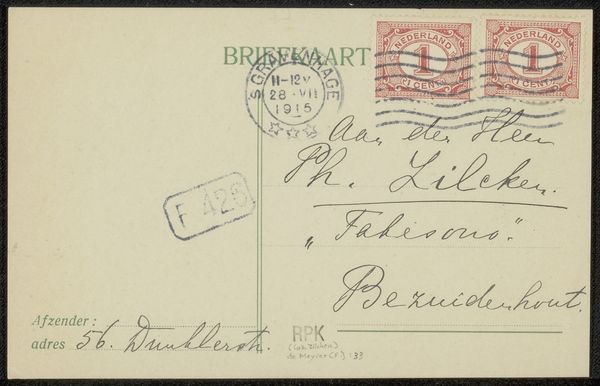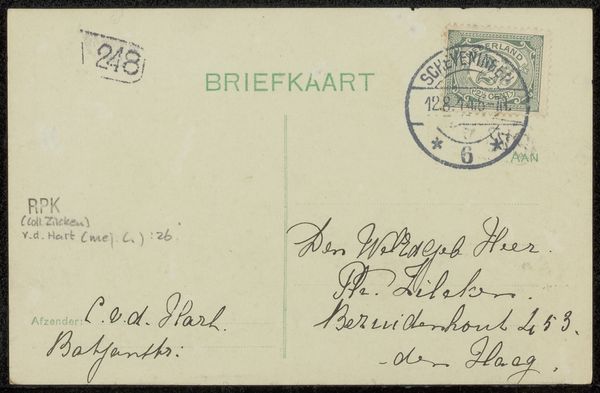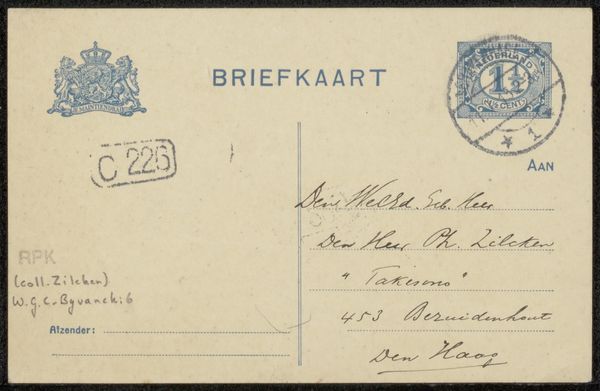
#
hand-lettering
#
pen illustration
#
pen sketch
#
hand drawn type
#
hand lettering
#
personal sketchbook
#
pen-ink sketch
#
pen work
#
sketchbook drawing
#
sketchbook art
Copyright: Rijks Museum: Open Domain
This postcard to August Allebé was produced in 1920, and it encapsulates the intersection of mass production and personal communication. Printed on thin card stock, likely made from wood pulp using industrial processes, its standardized format reflects the rise of efficient printing technologies and postal systems. The pre-printed elements such as the address lines, stamp placement, and the Dutch coat of arms indicate a world becoming increasingly standardized and interconnected. Yet, it is the handwritten inscription in blue ink that individualizes the card. This personal touch, along with the act of physically mailing the card, contrasts with the industrial production of the medium itself. The sender's handwriting, and the message that they have inscribed, are a testament to the enduring human desire for connection, even amidst mass production. This small artifact reminds us to consider the full spectrum of human experience—from the factory floor to the personal letter—when trying to understand the cultural significance of an artwork.
Comments
No comments
Be the first to comment and join the conversation on the ultimate creative platform.
